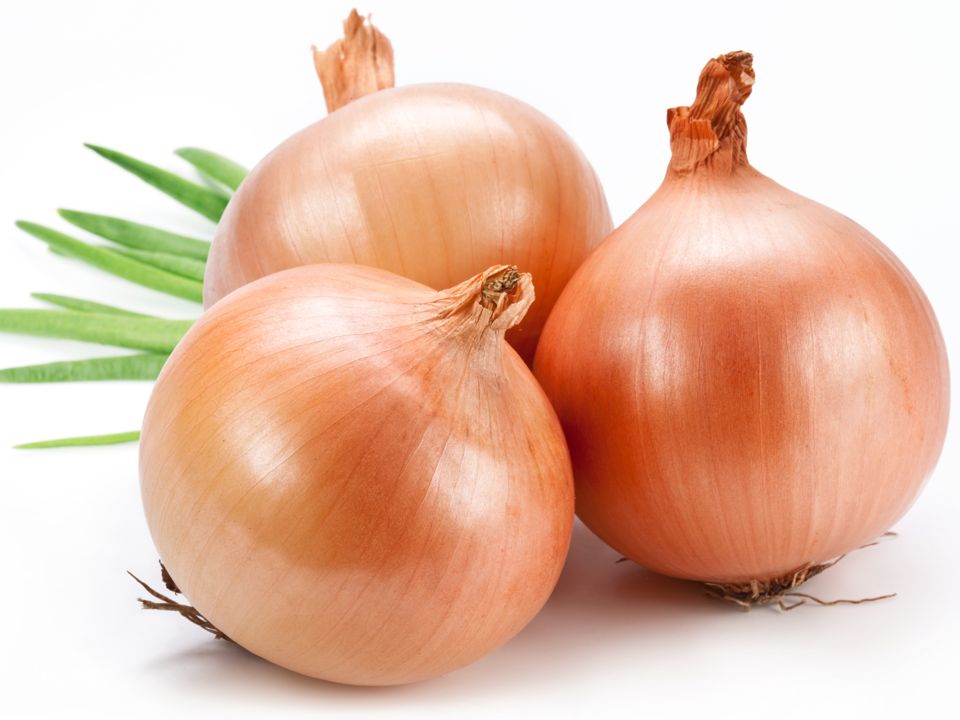Biological features. Bulb onion in culture is a biennial plant that is not demanding on heat. When forcing, it is slightly demanding on lighting, since the formation of leaves is due to the nutrients of the bulb. Requires uniform moisture. Does not tolerate salinity and high acidity.
Variety selection. Currently, there are no varieties specifically designed for forcing. Therefore, depending on the period of distillation, varieties of different geographical origin are used. For early forcing, as well as in low light, when relatively large low-budding bulbs are needed, southern varieties are used (Krasnodar G-35, Kuban yellow, Kaba, Donetsk golden, Karatal, Orange, Vertyuzhansky, Oktyabrsky, Spanish, Lugansky, Barletta, Southport White Globe, etc.), characterized by a short dormant period. For middle and late periods of distillation, sharp Central Russian multi-germ varieties (Bessonovsky, Rostovsky, Skopinsky, Spassky, Arzamassky, Strigunovsky, etc.) are best suited.
Planting material. For distillation, planting material is used that meets the following requirements: the absence of diseases and pests (especially thrips and nematodes), uniformity, a certain mass of one bulb and primordia. The last two requirements depend on the timing of distillation. Thus, under low light conditions, it is recommended to use samples weighing 40-60 g of southern low-budding varieties, in the rest of the time, samples with a weight of 30-40 grams or a diameter of 3-4 cm are used.
Before planting, the bulbs are specially prepared in order to break the state of dormancy and get aligned healthy plantings. The main method of preparing planting material is warming up for 2 days before planting (for early and medium forcing) at a temperature of 40°C;
Soil preparation. It is desirable to carry out onion forcing on zeolite or use sawdust-peat substrates or just sawdust. The following sawdust-peat substrate is recommended: organics (sawdust, sphagnum moss, high-moor peat) + dolomite flour according to the analysis (to reduce acidity and provide plants with Ca and Mg). When using a substrate or sawdust, the soil for distillation is prepared in two ways: cover the greenhouse soil with a film and pour a substrate 5-7 cm thick on top or pour the substrate or sawdust into boxes. The first method allows you to speed up the collection and increase the marketability of products due to the absence of pollution. The second one also allows you to speed up the collection and increase the marketability of products due to the absence of pollution and helps to use the area more rationally, but its disadvantage is high labor intensity.
Landing and care. The best way to plant in winter greenhouses is pavement. The approximate consumption of planting material is 8-12 kg / m2.
The temperature regime is as follows: for the first two weeks, to accelerate the growth of leaves, they keep 20-22 ° C, and then reduce it to 14-16 ° C, this allows you to get high-quality products. A further decrease in air temperature is not justified, despite the improvement in product quality, since growth is greatly slowed down. For example, when planting in January and the temperature regime is 10 ° C during the day and 5 ° C at night, they start harvesting only in April. The optimum soil temperature is 20°C. It is quite possible that it strongly influences the intensity of leaf initiation, since the growth point is at the level of the soil.

